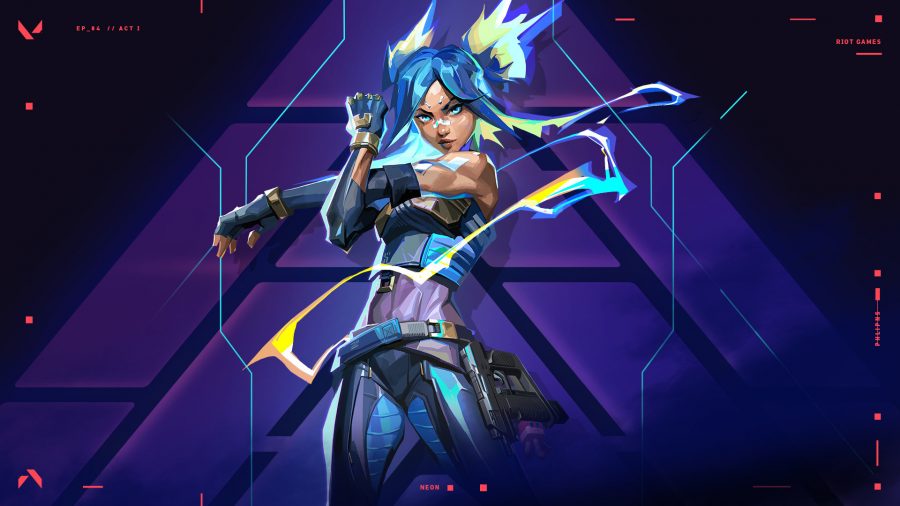Applying the best Valorant fps settings can greatly improve your chances of succeeding in those game-changing games and climbing the game leaderboards. However, reducing your gaming PC’s system latency is just as important as increasing its frame rate, and we’re here to help you achieve both.
there are more nuances best brave setups than simply minimizing the game’s various graphical options and calling it a day. In fact, it can hamper your ability to read the game environment due to muddy textures and distracting blurry edges.
With that in mind, we’ve rounded up the best Valorant settings that prioritize frames per second without sacrificing too much on the look of the game. Nvidia Reflex is available and can reduce your system latency if you are using an Nvidia GeForce GTX 900 or newer graphics card. .
As a reminder, here are the system requirements for Valorant:
| Minimum (30fps) |
advised (60fps) |
high quality (144+fps) |
|
| exploitation system | windows 7 64 bit | windows 10 64 bit | windows 10 64 bit |
|---|---|---|---|
| CPU | Intel Core 2 Duo E8400 AMD Athlon 200GE |
Intel Core i3 4150 AMD Ryzen 3 1200 |
Intel Core i5 9400F AMD Ryzen 5 2600X |
| GPU | AMD Radeon R5 200 intel hd4000 |
nvidia geforce gt 730 AMD Radeon R7 240 |
NvidiaGeForce GTX 1050Ti AMD Radeon R7 370 |
| video memory | 1GB | 1GB | 1GB |
| RAM | 4GB | 4GB | 4GB |
| storage | 20GB | 20GB | 20GB |
PCGamesN test setup: MSI MPG Trident AS 11th Gaming PC with Intel Core i7 11700F, MSI Ventus Nvidia GeForce RTX 3070, 32GB DDR4 3200MHz RAM, MSI B560 motherboard and Windows 11.
Parameters of the best brave
Here are the best Valorant builds:
- Display mode: full screen
- Low Latency Nvidia Reflex: Enabled + Throttling (if supported)
- Multi-Threaded Rendering: Enabled
- Material quality: high
- Texture quality: high
- Detail Quality: Low
- UI Quality: Low
- Thumbnail: Disabled
- Vertical Sync: Off
- Anti-aliasing: MSAA 4x
- Anisotropic filtering: 8x
- Enhance Clarity: Off
- [Beta] Experimental Sharpening: Enabled
- flowering: the
- Distortion: Off
- Drop Shadows: Off
This setting should provide the best balance of visual quality and performance for most gaming PCs, but there are a few key changes you can make to affect how Valorant works and looks.
We find in detail be the most demanding of the graphics options in Valorant. Change the level of detail applied to backgrounds and non-game effects so you don’t miss anything important by setting it to “Low”. However, most systems should have no problem running it at higher presets.
Material Qualitative has the most significant impact on a game’s visuals by controlling the complexity of its shaders. This doesn’t have a significant impact on FPS for most graphics cards, so we recommend running it at as high a preset as your PC can handle.
Anisotropic Filtering as good as flower it also gives Valorant a more stylish feel at higher settings, and thankfully doesn’t have much of an impact on performance. However, try disabling the latter before disabling the former if you need to increase your frame rate.
Bye Nvidia low latency SLR it won’t help your frame rate, it will reduce your system’s input lag. Essentially, this allows your PC to draw frames as quickly as possible, which means you’ll be able to see enemies sooner and dampen things like peeper advantage as a defender a bit. There is no downside to enabling this setting, so we recommend enabling it. + gain

Valorant performance issues
You shouldn’t experience much performance issues with Valorant, but if you have an AMD Ryzen processor and one of Asus’ top gaming motherboards, there may be some minor issues. Fortunately, there is a simple solution that you can apply to fix whatever problem you are facing.
Just follow the instructions below, but note that this solution will only work if Asus AI Suite 3 is installed on your gaming PC and HPET is enabled:
- Press the Windows key on your keyboard and type crew
- The right button of the mouse command line and choose Execute as an administrator
- Kind of bcdedit.exe /set useplatformclock false and press Get in
- When “The operation was successful” appears, restart your computer
- Benefit from improved performance

Upgrading your CPU and GPU for gaming can also help improve performance, and you don’t need to splurge on a better graphics card or CPU to keep Valorant running at high frame rates. In fact, most of the components released in the last five years, like the Nvidia GeForce GTX 1050 Ti or the Intel Core i5 9400F, are powerful enough for Riot Games’ tactical FPS.
Take the Valorant System Requirements Test on PCGameBenchmark to answer the question… Can I run Valorant?
RAM, keyboards, monitors, PCs, gaming chairs, headsets, SSDs, gaming mice, gaming headsets
Source : PC Gamesn

